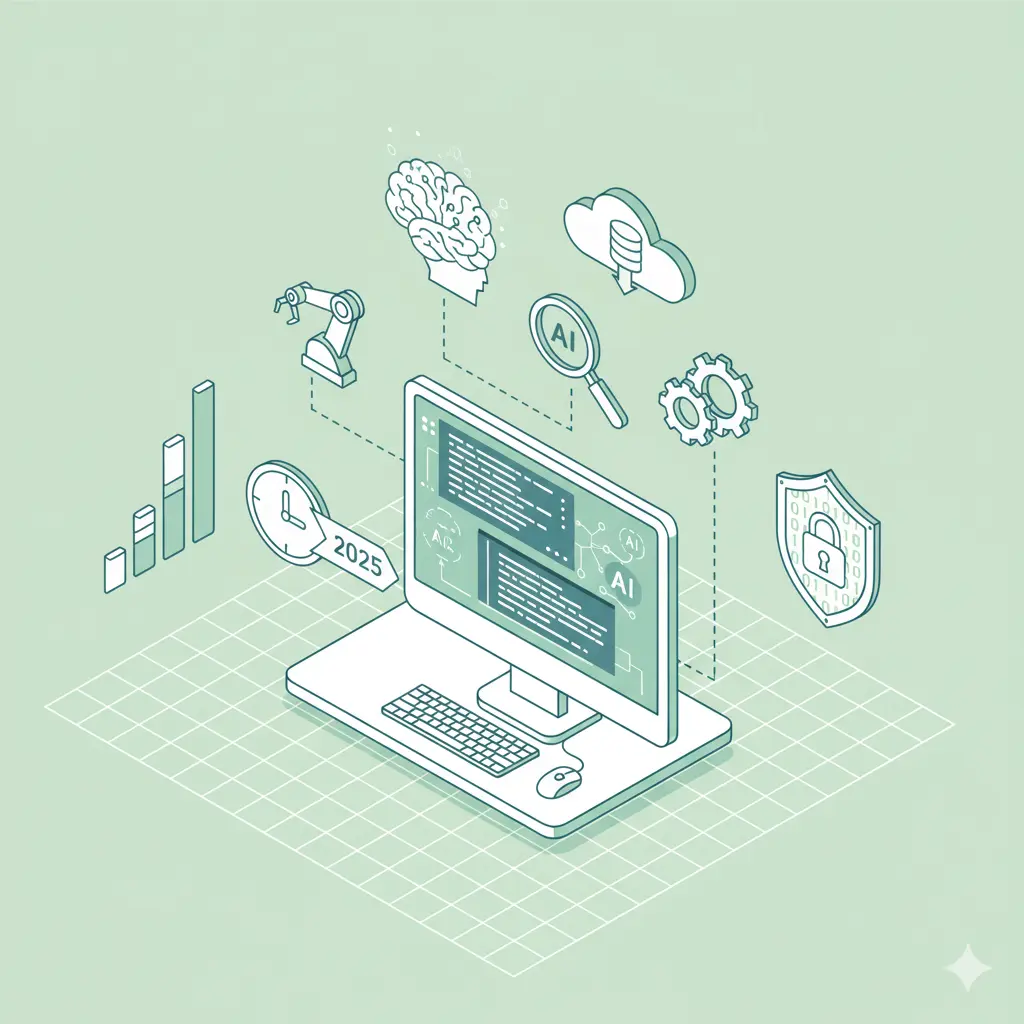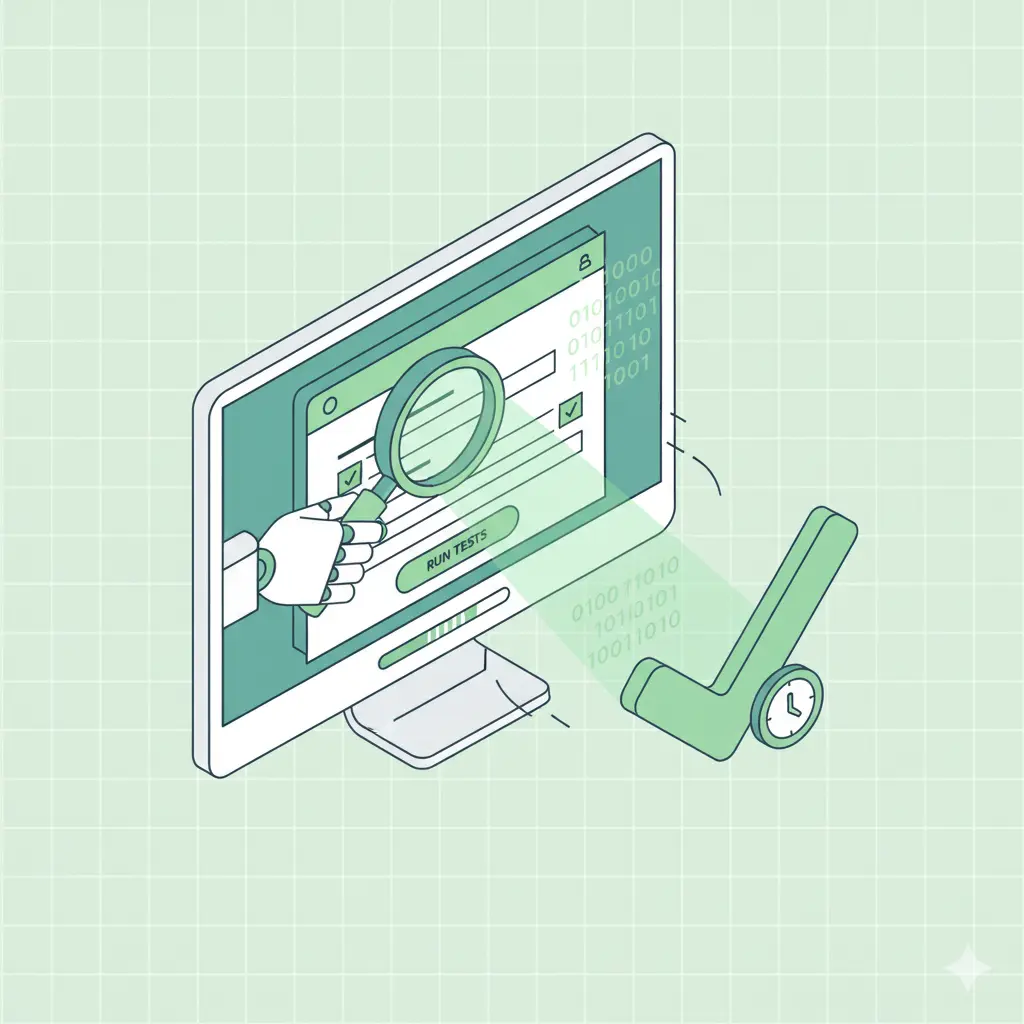How AI is Transforming ServiceNow Development (2025 Guide)
AI is changing everything in ServiceNow development from cutting catalog build times by 88% to powering 24/7 autonomous agents. This in-depth 2025 guide covers Now Assist, AI Agents, real-world case studies and the emerging best practices for governance, talent, and scaling. Whether you're dealing with backlog, rising dev costs, or preparing your team for GenAI, this is your blueprint for what’s next on the Now Platform.

ServiceNow development teams face a critical challenge: backlogs grow faster than teams can build. The traditional answer of hiring more developers no longer works when demand exceeds supply by 2025. Artificial intelligence offers a fundamentally different solution, and it's already transforming how organizations build on the ServiceNow platform.
This guide examines how AI is changing ServiceNow development right now, with real use cases, measurable results, and practical guidance for adoption.
The ServiceNow Development Crisis
ServiceNow backlogs continue expanding while development capacity struggles to keep pace. The numbers tell a stark story.
The talent shortage:
- 90% of global enterprises face severe IT talent shortage
- ServiceNow market growing over 22% annually
- Demand expected to exceed supply by 2025
- 231,000 additional application developers needed by 2028
- 90,000 system administrators required globally
- 87,000 business process analysts in demand
Salary pressure reflects scarcity:
- North America: $80,000-$142,000 for ServiceNow developers
- Europe: €65,000-€160,000 for experienced talent
- Specialty areas (GRC, SPM, SecOps) command premium rates
The backlog problem:
- Average backlog: 9 months for mid-size teams
- Some teams face 1,500+ requests in queue
- Business expectations: "We need this yesterday"
- Traditional solutions (hire more, train faster) cannot scale
AI offers a different approach: let artificial intelligence handle routine development while human developers focus on innovation and complex problem-solving.
ServiceNow's AI Platform: Now Assist and AI Agents
ServiceNow has invested heavily in AI capabilities, creating a comprehensive platform for intelligent automation.
Now Assist: Generative AI for ServiceNow
Now Assist, launched in the Vancouver release and expanded through subsequent versions, provides generative AI powered by a specialized 15-billion-parameter model developed with Hugging Face and NVIDIA.
Core capabilities:
- Text-to-code generation: Describe what you need in plain English, and Now Assist generates complete catalog items with questions, variables, and form configurations. Future capabilities will include UI policy generation and dynamic behavior.
- Flow Designer integration: Describe a workflow in natural language, and receive complete automated approvals, notifications, and sub-flows. No manual configuration required.
- Case and chat summarization: Agents save an average of 6 hours per week with automatic summarization of customer interactions.
- Resolution notes generation: 50% faster incident closure rates through AI-generated resolution documentation.
- AI Search: Contextual understanding provides more relevant results than traditional keyword search.
- Code completion and debugging: The specialized 15-billion-parameter model provides intelligent code completion, debugging assistance, function creation, database query generation, and UI element development.
AI Agents: Autonomous Decision-Making
AI Agents, announced September 2024, represent ServiceNow's agentic AI offering. Unlike traditional automation that follows predefined rules, AI Agents make decisions and orchestrate multi-agent workflows autonomously.
Key components:
- Agent Studio: Low-code/no-code agent creation enables business users to build autonomous agents without extensive technical knowledge.
- AI Agent Fabric: Orchestrates multi-agent workflows, allowing specialized agents to collaborate on complex tasks.
- AI Control Tower: Centralized governance for policy enforcement and compliance monitoring across all AI agents.
- 24/7 operation: Agents work continuously across ITSM, CSM, HR, Finance, and Security domains.
AI Adoption Shows Strong Momentum Despite Maturity Challenges
The Enterprise AI Maturity Index 2025 reveals both the promise and challenges of AI adoption.
Adoption statistics:
- 78% of organizations now use AI in at least one business function (up from 55% in 2023)
- 44 customers contributed over $1 million in Now Assist annual contract value in Q3 2024
- 6 deals exceeded $5 million
- 2 deals surpassed $10 million
However, maturity lags:
- Average organizational AI maturity: 35 out of 100 (declined 9 points year-over-year)
- Only 33% have reached piloting stage or beyond for agentic AI
- 43% plan adoption within 12 months
The business case remains compelling:
- 67% report AI increased gross margins by an average of 11%
- $3.50 ROI for every $1 invested in AI
- Pacesetter organizations: 83% report gross margin increases
This gap between adoption and maturity signals that AI innovation outpaces organizations' capacity to deploy it effectively. Success requires more than technology investment; it demands strategy, governance, and cultural change.
Real-World AI Use Cases Demonstrate Transformative Impact
Abstract discussions of AI capabilities matter less than concrete results. Here are documented case studies showing AI's impact on ServiceNow implementations.
Orica: 94% Service Desk Deflection
Orica, a mining services company, increased IT Service Desk deflection from 18% to 94% using AI-powered virtual agents. They doubled fully resolved cases without human intervention, dramatically reducing service desk workload while improving resolution times.
Lloyd's Bank: 4,000 Workdays Saved
Lloyd's Bank achieved up to 90% HR case deflection with AI agents handling routine HR inquiries. This saved over 4,000 workdays, allowing HR professionals to focus on complex employee issues requiring human judgment.
AstraZeneca: 90,000 Hours Saved
AstraZeneca streamlined onboarding for 20,000 annual new employees, saving over 90,000 hours. Tasks that previously took 20-30 minutes now complete in seconds through AI automation.
Lab operations impact: AI monitors equipment, detects issues, and places supply orders autonomously. Researchers focus on scientific work rather than administrative tasks.
Stellantis: 85% Operations Automation
Stellantis uses AI to schedule and load 85% of European operations cars. When supply chain AI detected a 25% battery cost increase, it automatically recommended alternate suppliers, preventing significant budget impact.
ServiceNow's Internal Implementation
ServiceNow's "Now-on-Now" implementation demonstrates the platform's capabilities through internal use:
- Approximately 54% deflection on "Report an issue" forms
- 14% increase in employee self-service
- 10% boost in customer self-service
- Agents save 12-17 minutes per case
- $5.5 million annualized savings from case and incident avoidance
- 56% positive customer sentiment from case summarization
- 50% faster incident closure with resolution notes
What AI Can Actually Build in ServiceNow Today
AI capabilities for ServiceNow development have evolved from theoretical to practical. Here is what AI can reliably build right now -
- Service catalog items: Complete forms, workflows, approvals, and email notifications. AI handles the entire catalog item lifecycle from requirements to deployment.
- Integrations: REST APIs, MID Server configurations, and webhook implementations. AI generates connection logic and handles authentication.
- Custom applications: Scoped apps with tables, UI, and business logic. AI creates the application structure and implements core functionality.
- Business rules: Complex logic and data validation. AI writes JavaScript that executes on specified conditions.
- Client scripts: Form interactions and user experience enhancements. AI implements dynamic form behavior and validation.
- ATF tests: Comprehensive test coverage for all custom development. AI generates test cases and validates functionality.
- Documentation: Technical specifications and user guides. AI documents what it builds, maintaining up-to-date reference materials.
Time Savings: Traditional vs AI Development
Example: E-commerce Return Request Catalog Item
Traditional approach (38 hours total):
- Define requirements: 2 hours
- Design form: 4 hours
- Build workflow with approvals: 8 hours
- Create email notifications: 2 hours
- Build integration to order system: 12 hours
- Write ATF tests: 6 hours
- Document everything: 4 hours
AI approach (4.5 hours total):
- Provide requirements in plain English: 30 minutes
- AI builds everything: 3 hours (automated)
- Review and refine: 1 hour
This pattern repeats across development tasks. AI handles routine implementation while developers focus on requirements, architecture, and refinement. The more standardized the development task, the greater AI's advantage.
Critical Pain Points AI Addresses
AI transforms ServiceNow development by eliminating specific bottlenecks that consume disproportionate time.
- Catalog item creation: Canada Life reduced catalog creation time by 200% with AI assistance. What previously required days of configuration now completes in hours.
- Custom code writing: The specialized 15-billion-parameter model provides context-aware code completion, reducing errors and accelerating development.
- Workflow design and testing: Natural language workflow creation eliminates manual Flow Designer configuration.
- System integration: Integration Hub automates API connections without requiring specialized integration expertise.
- Technical documentation: AI generates documentation as it builds, maintaining current technical specifications automatically.
- Update set management: AI handles complex dependencies and migration sequences.
- Performance optimization: AI identifies inefficient code patterns and suggests optimizations.
Governance Gaps Threaten AI Success
Despite compelling use cases, many organizations struggle with AI governance. The Enterprise AI Maturity Index 2025 identifies critical gaps:
Leadership challenges:
- Only 64% of Pacesetters operate with clear, shared AI vision (versus 30% of others)
- Just 36% correlation between leadership/strategy and profitability
Governance deficiencies:
- Only 44% have designated AI governance teams
- 58% empower teams to make AI decisions without centralized oversight
- 59% work to foster AI trust culture but lack proper guardrails
- 30% correlation between governance/control and profitability
Skill gaps:
- Only 29% strongly agree they have the right talent mix for AI
- 64% are still identifying needed skills
- Just 55% have AI reskilling programs
Data quality issues:
- Gartner predicts 60% of AI projects will be abandoned by 2026 due to lack of AI-ready data
- CMDB management and operational data quality cited as top challenges
Organizations that address governance proactively avoid these pitfalls. Waiting until after deployment to establish governance creates significant rework and potential failures.
Success Factors That Separate Pacesetters from the Rest
The Enterprise AI Maturity Index 2025 analyzed what distinguishes top-performing organizations (Pacesetters, the top 18.2%) from others.
Leadership and strategy (36% correlation with profitability):
- 83% of Pacesetters report gross margin increases versus lower rates for others
- 64% operate with clear, shared AI vision versus 30% of others
Governance and control (30% correlation with profitability):
- 63% of Pacesetters address data governance/security with AI policies versus 42% others
- 72% assess AI applications and understand data requirements versus 48%
- 57% have designated governance teams versus 41%
Platform approach (23% spending correlation):
- 66% of Pacesetters employ a platform approach versus 46% others
- 56% connected data/operational silos versus 41%
- Single codebase and central repository accessible across functions
Talent and culture:
- 50% of Pacesetters have right talent versus 29% others
- 80% provide training/support for upskilling versus 54%
- 71% host AI learning events versus 50%
- 64% identify AI champions versus 54%
The potential impact: a $113 billion increase in gross margins across Forbes Global 2000 companies if all became Pacesetters. This illustrates both the opportunity and the competitive gap widening between leaders and laggards.
The Future of ServiceNow Development
Industry analysts and ServiceNow leadership predict fundamental transformation of development workflows.
ServiceNow CEO Bill McDermott: "Every single business process, every single workflow will be re-engineered with generative AI."
Chief Innovation Officer Dave Wright: Envisions AI designing user interfaces and complete "text to workflow" integration. Describe a problem, AI generates the complete solution.
Gartner predictions:
- By 2028: 60% of software development organizations will use low-code platforms as their main developer platform (up from 10% in 2024)
- By 2029: Over 60% of enterprises will adopt AI agent platforms to automate complex workflows
- By 2026: 60% of AI projects will be abandoned due to lack of AI-ready data
- $3 trillion will be spent on AI from 2023-2027, with 36% on GenAI
ServiceNow/Pearson research identifies 8+ million U.S. roles transforming due to agentic AI. Application developers save 4.2 hours per week with AI. However, highly affected roles extend beyond IT to payroll, administration, and operations.
Skill transformation: Holistic skills (communication, collaboration, innovation) become essential as technical tasks automate. Developers shift from implementing solutions to architecting them and guiding AI assistants.
Lopez Research: Forecasts AI agents running 50% of operations autonomously versus 20-30% for traditional automation.
Deloitte Insights: Characterizes agentic AI as causing "more rapid and greater impact than any shift before," with evolution from "human-in-the-loop" to "human-on-the-loop" models.
How to Adopt AI in Your ServiceNow Team
Successful AI adoption requires methodical planning and execution.
Step 1: Identify AI-friendly work
Best candidates for AI:
- Repetitive catalog items
- Standard integrations
- Workflow automation
- Test generation
- Documentation creation
Keep for humans:
- Complex architecture decisions
- Novel business logic requiring creativity
- Vendor negotiations
- Strategic planning
Step 2: Establish governance before scaling
Create AI governance framework covering:
- Who can deploy AI agents
- What decisions AI can make autonomously
- Data security and privacy requirements
- Compliance monitoring processes
- Escalation paths for edge cases
Step 3: Start with pilot projects
Select 2-3 high-value, low-risk projects:
- Measurable business impact
- Reasonable scope
- Stakeholder support
- Clear success criteria
Run pilots for 60-90 days, measure results rigorously, document lessons learned, and refine approach before expanding.
Step 4: Invest in talent development
AI doesn't eliminate the need for skilled professionals, it changes what skills matter:
- Train developers on AI tool usage
- Develop AI prompt engineering capabilities
- Build governance and oversight skills
- Foster collaboration between AI and humans
Step 5: Scale systematically
Expand successful patterns gradually:
- Document best practices from pilots
- Create templates and standards
- Build internal communities of practice
- Measure and optimize continuously
Organizations following this path avoid common pitfalls while maximizing AI's potential to transform their ServiceNow development capabilities.
Tools like Echelon Complement ServiceNow's Native AI
While ServiceNow's Now Assist and AI Agents provide powerful capabilities for the platform itself, specialized tools address specific development workflows.
Modern AI development platforms work alongside ServiceNow's built-in AI to handle the complete development lifecycle. While Now Assist excels at generating individual components, end-to-end development pipelines benefit from tools purpose-built for automating larger development workflows.
The ideal approach combines ServiceNow's native AI capabilities with specialized development tools, creating a comprehensive automation strategy that addresses both platform operations and custom development.
Conclusion: The AI ServiceNow Era Has Begun
AI is not coming to ServiceNow development. It is already here, and organizations using it today have measurable advantages: 10x faster development, complete test coverage, eliminated backlogs, and competitive differentiation.
The question is not "Will AI change ServiceNow development?" but rather "When will your team adopt it?"
Early adopters establish competitive advantages that compound over time. As AI capabilities improve and more organizations adopt, the gap between leaders and laggards widens.
ServiceNow development teams that embrace AI today position themselves for the next decade of platform evolution. Those that wait risk falling permanently behind organizations already leveraging AI to deliver faster, build better, and innovate continuously.
Sources
- ServiceNow AI Maturity Index 2025
- Introducing Now Assist for the Vancouver Release
- ServiceNow Unveils AI Agents to Automate Workflows
- The 2024 AI Index Report
- Gartner Press Releases and Forecasts
- Orica Customer Story
- Lloyds Bank: Generative AI for HR Transformation
- ServiceNow "Now on Now" Internal Case Study



